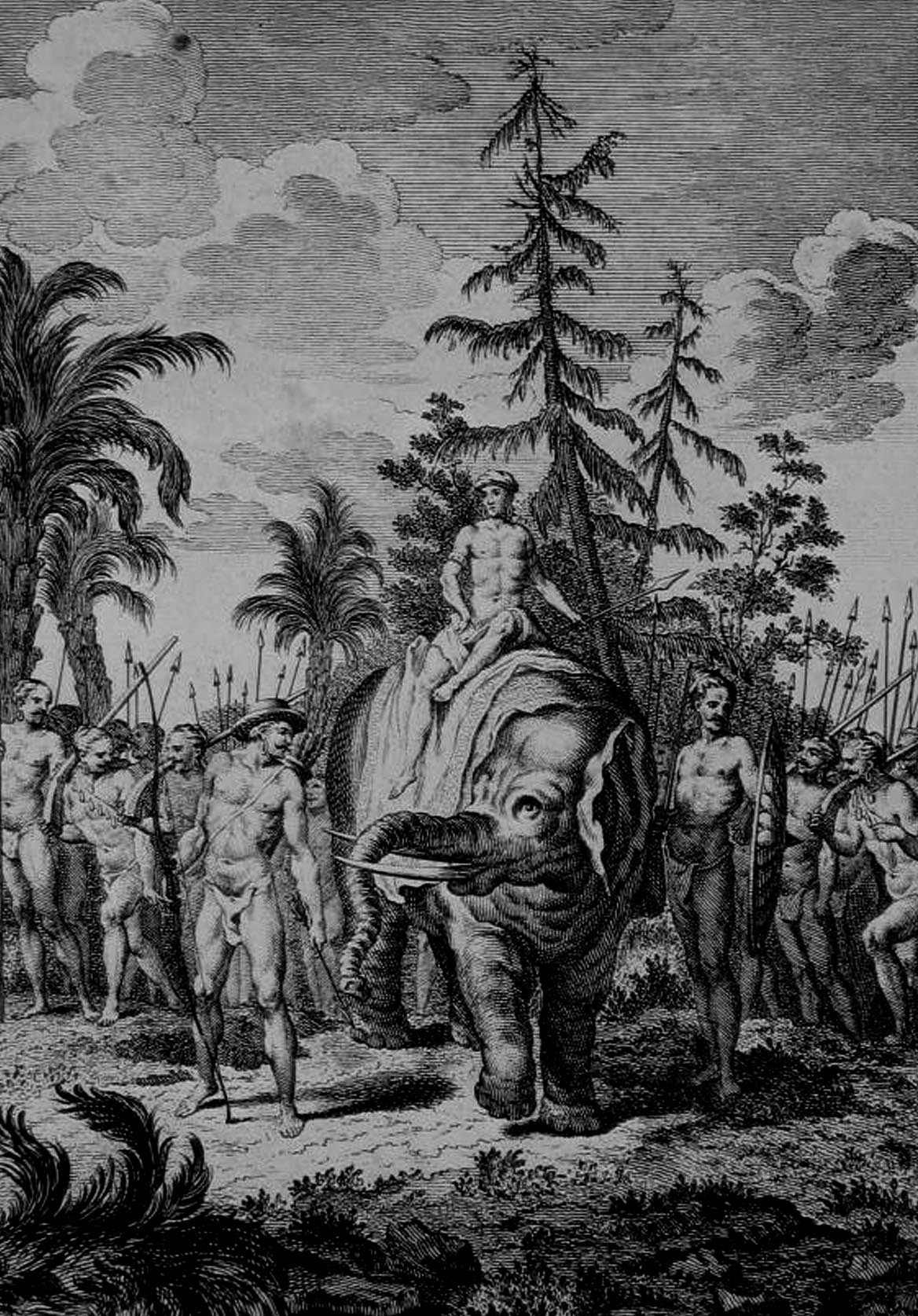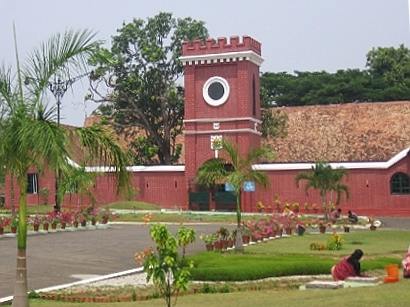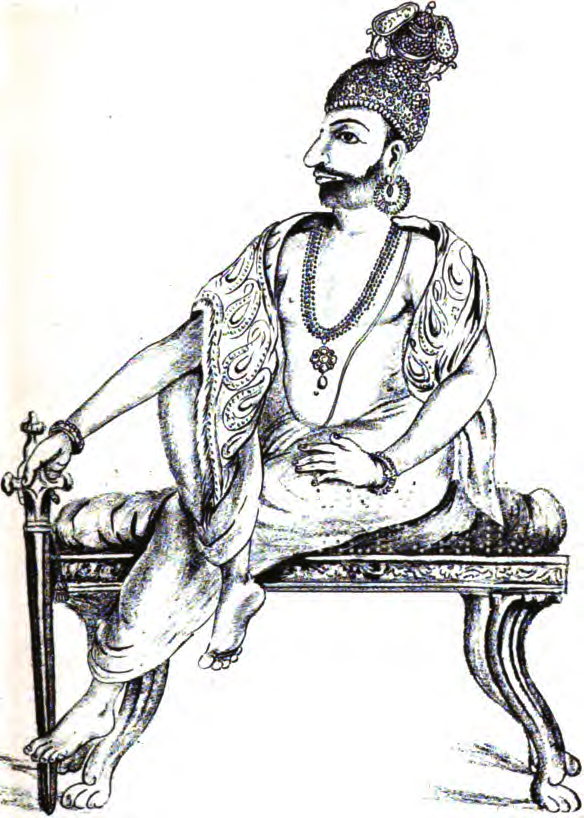|
Muhammad Habibullah
Khan Bahadur Sir Muhammad Habibullah KCSI KCIE (22 September 1869 – 16 May 1948) was an Indian politician and administrator who served as the Dewan of Travancore from 1934 to 1936. Personal life Habibullah was born in Madras (now Chennai) to Aushukh Hussain Khan Saheb on 22 September 1869. He was a member of the Arcot royal family and closely related to the Nawabs of Arcot. He studied law at Zila High School in Saidapet and joined the bar at Vellore in July 1888. He was married to Sadathunissa Begum. Early political career Habibullah was involved in local commerce politics and was elected honorary chairman of the Vellore municipality in 1895. He resigned from his legal practice upon being elected official secretary in September 1901, and served in that role until September 1905. He was then elected chairman, a position he held for 14 years (1905–1919). From July 1919 to January 1920, he was a member of the executive council of the Governor of Madras while P. ... [...More Info...] [...Related Items...] OR: [Wikipedia] [Google] [Baidu] |
Khan Bahadur
Khan Bahadur – a compound of khan ('leader') and bahadur ('brave') – was a formal title of respect and honor, which was conferred exclusively on Muslim and other non-Hindu natives of British India. It was one degree higher than the title of Khan Sahib. The title was conferred on individuals for faithful service or acts of public welfare to the Empire. Recipients were entitled to prefix the title to their name and were presented with a special Title Badge and a citation (or ''sanad''). It was conferred on behalf of the Government of British India by the Viceroy and Governor-General of India. The title was dis-established in 1947 upon the independence of India. The title "Khan Bahadur" was originally conferred in Mughal India on Muslim subjects in recognition of public services rendered and was adopted by British India for the same purpose and extended to cover other non-Hindu subjects of India. Hindu subjects of British India were conferred the title of "Rai Bahadur". R ... [...More Info...] [...Related Items...] OR: [Wikipedia] [Google] [Baidu] |
Saidapet
Saidapet, also known as Saidai, is a neighbourhood in Chennai, India, situated in the northern banks of the Adyar River and serves as an entry point to Central Chennai. It is surrounded by West Mambalam in the North, C.I.T Nagar in the North-East, Nandanam in the East, Guindy in the South, Jafferkhanpet and Ashok Nagar in the North-West. The Saidapet Court, the only other court of judicature in Chennai city apart from the Madras High Court, and the Saidapet bus depot are located here. Prior to its incorporation in Madras city, Saidapet functioned as the administrative headquarters of Chingleput district. The neighbourhood is served by Saidapet railway station of the Chennai Suburban Railway Network. Saidapet was occupied by the British East India Company and was made the administrative headquarters of Chingleput district. The health district in Chengalpet district is split into Saidapet hud and Kanchipuram hud. Panagal building which is a part of Saidapet is a famous lan ... [...More Info...] [...Related Items...] OR: [Wikipedia] [Google] [Baidu] |
Thomas Austin (civil Servant)
Sir Thomas Austin, KCIE (20 July 1887 – 27 June 1976) was a British civil servant of the Indian civil service and administrator who served as the Diwan of Travancore from 1932 to 1934. Early life Thomas Austin was born in 1887 to a British clergyman, Rev. T. Austin. He was educated at Plymouth College and Jesus College, Cambridge. Indian civil service Thomas Austin entered the Indian Civil Service in 1910 and served in various junior positions before being appointed District Collector of Nilgiris in 1929. He served as Collector of Nilgiris from 1929 to 1932 when he was appointed the Diwan of Travancore on a two-year contract. In his later life, Austin also served as Chief Secretary of the Government of Madras. Honours Austin was made a Knight Commander of the Order of the Indian Empire in 1945. Austin Town in the city of Bangalore, India India, officially the Republic of India ( Hindi: ), is a country in South Asia. It is the seventh-largest country ... [...More Info...] [...Related Items...] OR: [Wikipedia] [Google] [Baidu] |
Habibullah Road
Habibullah also spelled Habib Ullah, Habibollah, Habeeb-Allah etc. ( ar, حَبِيْبَُ ٱلله), is a male Muslim given name meaning in ''Beloved of God'', stemming from the male form of the name Habib. It may refer to: People *Raja Sir Chulan ibni Almarhum Sultan Abdullah Muhammad Shah Habibullah, known as Raja Chulan (1869–1933), member of the Perak royal family (Malaya) *Habibullah Khan, Emir of Afghanistan *Muhammad Habibullah (1869–1948), Indian nobleman and statesman *Habibullah Khan (1872–1919), King of Afghanistan *Habibullāh Kalakāni (ca. 1890–1929), Emir of Afghanistan *Khwaja Habibullah (1895–1958), Nawab of Dhaka * Habibullah Khan Tarzi (born 1896), Afghan diplomat *Khan Habibullah Khan (1901–1978), Pakistani politician and High Court judge * Habibullah Bahar Chowdhury (1906–1966), politician and writer from East Bengal * Amir Habibullah Khan Saadi (1909–1989), Indian freedom fighter and Pakistani politician *Habibullah Khan Khattak (1913–1994 ... [...More Info...] [...Related Items...] OR: [Wikipedia] [Google] [Baidu] |
Knights Bachelor
The title of Knight Bachelor is the basic rank granted to a man who has been knighted by the monarch but not inducted as a member of one of the organised orders of chivalry; it is a part of the British honours system. Knights Bachelor are the most ancient sort of British knight (the rank existed during the 13th-century reign of King Henry III), but Knights Bachelor rank below knights of chivalric orders. A man who is knighted is formally addressed as " Sir irst Name urname or "Sir irst Name and his wife as "Lady urname. Criteria Knighthood is usually conferred for public service; amongst its recipients are all male judges of His Majesty's High Court of Justice in England. It is possible to be a Knight Bachelor and a junior member of an order of chivalry without being a knight of that order; this situation has become rather common, especially among those recognized for achievements in entertainment. For instance, Sir Michael Gambon, Sir Derek Jacobi, Sir Anthony Hopkins ... [...More Info...] [...Related Items...] OR: [Wikipedia] [Google] [Baidu] |
Imperial Service Troops
The Imperial Service Troops were forces raised by the princely states of the British Indian Empire. These troops were available for service alongside the Indian Army when such service was requested by the British government. At the beginning of the 20th century, their total numbers were about 18,000 men. The troops were routinely inspected by British army officers and generally had the same equipment as soldiers in the British Indian Army. Although their numbers were relatively small, the Imperial Service Troops were employed in China and British Somaliland in the first decade of the 20th century, and later saw action in the First World War and Second World War. Genesis In March 1885, after a Russian force defeated the Afghan army at Panjdeh, a village on the ill-defined Russian-Afghan frontier, the British were alarmed and immediately dispatched units from the Army of India to reinforce the North-West Frontier defenses. The "Panjdeh incident," however, also resulted in ... [...More Info...] [...Related Items...] OR: [Wikipedia] [Google] [Baidu] |
Nair
The Nair , also known as Nayar, are a group of Indian Hindu castes, described by anthropologist Kathleen Gough as "not a unitary group but a named category of castes". The Nair include several castes and many subdivisions, not all of whom historically bore the name 'Nair'. Fuller (1975) p. 309 These people lived, and continue to live, in the area which is now the Indian state of Kerala. Their internal caste behaviours and systems are markedly different between the people in the northern and southern sections of the area, although there is not very much reliable information on those inhabiting the north. Fuller (1975) p. 284 Historically, Nairs lived in large family units called ''tharavads'' that housed descendants of one common female ancestor. These family units along with their unusual marriage customs, which are no longer practiced, have been much studied. Although the detail varied from one region to the next, the main points of interest to researchers of Nair marriage cust ... [...More Info...] [...Related Items...] OR: [Wikipedia] [Google] [Baidu] |
Muslim
Muslims ( ar, المسلمون, , ) are people who adhere to Islam, a monotheistic religion belonging to the Abrahamic tradition. They consider the Quran, the foundational religious text of Islam, to be the verbatim word of the God of Abraham (or ''Allah'') as it was revealed to Muhammad, the main Islamic prophet. The majority of Muslims also follow the teachings and practices of Muhammad (''sunnah'') as recorded in traditional accounts ('' hadith''). With an estimated population of almost 1.9 billion followers as of 2020 year estimation, Muslims comprise more than 24.9% of the world's total population. In descending order, the percentage of people who identify as Muslims on each continental landmass stands at: 45% of Africa, 25% of Asia and Oceania (collectively), 6% of Europe, and 1% of the Americas. Additionally, in subdivided geographical regions, the figure stands at: 91% of the Middle East–North Africa, 90% of Central Asia, 65% of the Caucasus, 42% of South ... [...More Info...] [...Related Items...] OR: [Wikipedia] [Google] [Baidu] |
Ezhava
The Ezhavas () are a community with origins in the region of India presently known as Kerala, where in the 2010s they constituted about 23% of the population and were reported to be the largest Hindu community. They are also known as ''Ilhava'', ''Irava'', ''Izhava'' and ''Erava'' in the south of the region; as ''Chovas'', ''Chokons'' and ''Chogons'' in Central Travancore; and as ''Thiyyar'', ''Tiyyas'' and ''Theeyas'' in the Malabar region. Some are also known as ''Thandan'', which has caused administrative difficulties due to the presence of a distinct caste of Thandan in the same region. The Malabar Ezhava Pullapilly (1976) pp. 31–32 group have claimed a higher ranking in the Hindu caste system than do the others, although from the perspective of the colonial and subsequent administrations they were treated as being of similar rank. Nossiter (1982) p. 30 Ezhava dynasties such as the Mannanar existed in Kerala. Pullapilly (1976) pp. 31–32 The Chekavar, a warrior sect ... [...More Info...] [...Related Items...] OR: [Wikipedia] [Google] [Baidu] |
Nair Brigade
The Nair Brigade was the army of the erstwhile kingdom of Travancore in India. Nairs were a warrior community of the region. The personal bodyguard of the king Marthanda Varma (1706–1758) was also called ''Thiruvithamkoor Nair Pattalam'' (Travancore Nair Army). The Travancore army was officially referred as the Travancore Nair Brigade in 1818. In the early years, only Nairs were admitted into this brigade. Later, the unit was expanded and several sub-units were formed. The name Nair Brigade remained unchanged, even following the admittance of non-Nairs. The headquarters of the brigade was in Thiruvananthapuram (Trivandrum). History The army of Travancore was modernised by Marthanda Varma, who is known as "the maker of modern Travancore".The first Commander in Chief of his army was Kumaraswamy Pillai,''Travancore State Manual'pdf Digital book/ref> who was a veteran soldier. Thanu Pillai, brother of then Dalawa Arumukham Pillai was made the Lieutenant Commander. He defeated t ... [...More Info...] [...Related Items...] OR: [Wikipedia] [Google] [Baidu] |
Maharaja Of Travancore
The Maharaja of Travancore was the principal title of the ruler of the Kingdom of Travancore in the southern part of Kerala, India. The Maharaja of Travancore was the topmost ruler of Travancore until 1949, when Travancore was annexed into India. Since then, the Maharaja of Travancore remains as a titular position. Maharajas of the Kingdom of Travancore Titular Maharaja After British India became independent as two dominions in 1947, Chithira Thirunal agreed to accede his state to the new Dominion of India. Travancore was united with the neighbouring Cochin state and Chithira Thirunal served as Rajpramukh of the Travancore-Cochin Union from 1 July 1949 to 31 October 1956, which was the entire duration of the existence of that political entity. On 1 November 1956, the state of Kerala was created by uniting the Malayalam-speaking areas of the Travancore-Cochin Union with those of neighbouring Madras State, and Sree Chithira Thirunal's office of Rajpramukh came to an end. On 28 ... [...More Info...] [...Related Items...] OR: [Wikipedia] [Google] [Baidu] |
Chithira Thirunal Balarama Varma
Sree Padmanabhadasa Sree Chithira Thirunal Balarama Varma , popularly known as Sree Chithira Thirunal, was the last ruling Maharaja of the Princely State of Travancore, in southern India until 1949 and later the Titular Maharajah of Travancore until 1991. Sree Chithira Thirunal was the eldest son of Junior Maharani of Travancore, H.H. Sree Padmanabhasevini Vanchidharmavardhini Rajarajeshwari Maharani Moolam Thirunal Sethu Parvathi Bayi, and Sri Pooram Nal Ravi Varma Koyi Thampuran of the Royal House of Kilimanoor. He was privately educated, and became the Maharajah of Travancore, at the age of 12, upon the death of his maternal great uncle, the then Maharajah of Travancore Sree Moolam Thirunal, on 7 August 1924. In 1936, established the University of Travancore (now the University of Kerala) in 1937. The Women Studies Journal ''Samyukta'' reports that, 40% of the Travancore's revenue was set apart for education, during the reign of Sree Chithira Thirunal. Thiruvananthapuram I ... [...More Info...] [...Related Items...] OR: [Wikipedia] [Google] [Baidu] |

.jpeg)








